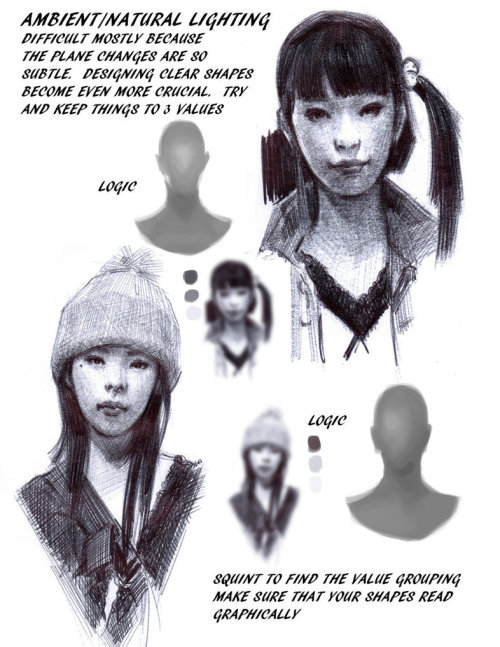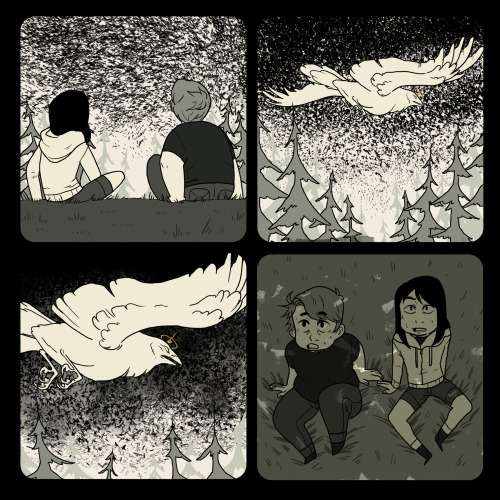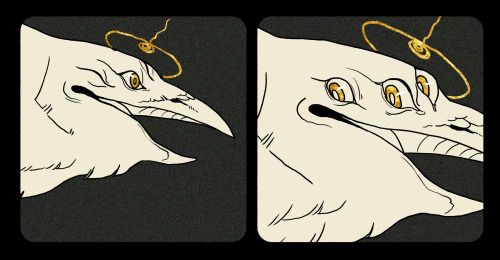The Fight Is Harder Each Year.




the fight is harder each year.
More Posts from Othermanymore and Others

Chalcopyrite, Sphalerite
Cu1+Fe3+S2, ZnS
Locality:
Büschhof Quarry (Schretzmair Quarry), Wirtenbach, Waldbröl, Bergisches Land, North Rhine-Westphalia, Germany
Image width approx. 3.5 mm
Photo by Michael Pfeil
stuff i’ve learned about writing after 10 weeks in an MFA program
so as some of you might know, i’m currently going to grad school for writing fiction and creative nonfiction. it’s a well-respected program, fully funded, with fantastic faculty and excellent classes. i’m learning a lot, so i thought even though i’m only just getting started (it’s a 2-year program), i’d share some stuff i’ve learned.
all writing is valid. scribbling a poem onto a cocktail napkin at an awkward family function is just as worthy of careful literary analysis as Faulkner. i’ve read stories and thought this is the worst thing i’ve ever read, i can’t take this seriously and then watched as established, widely published authors and academics provided a thoughtful and thorough criticism of it. treat all writing with respect, your own included.
all research is valid. i went on a rant about BDSM politics in queer culture, and this boy, who looked totally bewildered, asked me what BDSM was. after (hopefully) tactfully explaining it to him, he asked me, “so is that like…your research or something?” to which i replied, “…you could say that.” what i mean is, anything you are curious about is worthy of your attention and curiosity. anything you want to learn is worth learning. there is no such thing as a guilty pleasure when it comes to education.
good writing is a facet of place. the reason i think we believe our writing and research isn’t valid is because we are writing and researching in spaces that are not conducive to our interests. and when we see ourselves not yielding to those which we compare ourselves, it’s easy to think we’re “bad writers.” the key is to find places (publications, platforms, people, etc) that match your aesthetic, somewhere that your work might belong.
think of it this way: if you go to a function filled with foodies in formal wear talking about their yachts, you’re not going to bring celery sticks with peanut butter and raisins. that doesn’t mean ants on a log are a bad snack, but that this party is the wrong place for it. you bring that snack to a kid’s birthday party where you’ll probably have more fun anyway, and suddenly you’re a five-star chef.
don’t conform. take risks. this is something my workshop leader told me when i was concerned about workshopping my novella, and i told her i wanted to “tone it down.” i have gathered that the people who are considered experts in the field of writing are generally all looking for two things in any given work: creativity and whether or not the piece is doing something. (i’ll comment on the latter in the next point.) creativity is about being weird, about making things that don’t exist yet, using your knowledge of the world and filling in all the gaps with your own design. creativity is not about conforming to anyone else’s standards or expectations.
write to “do something” or create a conversation. admittedly i’m pretty accustomed to writing for the sake of self indulgence, which is great for inspiring first drafts but terrible for everything else. i’ve read works where the purpose of them was the complete romanticization or commentary of the self, and while that’s fine for people who already possess considerable ethos (re: celebrities), for people without it, these works aren’t adding to any conversation on any topic besides that writer’s introspection. (note, this is not “bad writing”; it just has a different place, generally a private journal.)
in the world of fanfic, we are all inherently adding to the conversation of a given canon. without that foundation, in the literary world your canon has to become something else: stories about big picture concepts like grief or oppression; stories subverting a popular generalization; stories that give new light to something. genre is thus not about conformity, but having a creative conversation with people who are interested in the same things you are. writing is about inserting yourself into the dialogue, adding to the lexicon of something greater than yourself.
where this breaks down, however, is the idea that some big picture topics are “overdone” such that they become tropes or cliches. tropes and cliches are indications of conformity. without a cohesive knowledge of your genre or interest to know which gaps need filled, it’s easy to fall into these traps of commonality.
positive and summative feedback is more helpful than negative feedback. a lot of people will disagree with me on this, but generally negative feedback is an indication that you didn’t understand the writers’ vision, and are superimposing your own vision over theirs. most people (in my community anyway) transform their negative criticism into questions for the writer to consider, or point out “what isn’t working.”
that said, the idea of summarizing what you just read is incredibly helpful, because it offers the writer insight into the things you picked up and stuck with you. it aligns the writers’ intentions with the reader’s perceptions to see if a story is working the way it should. this supposes, however, that you have an intention to your story, see: the “do something” point.
and mostly, positive criticism is the literal best. not only does it make writers happy, it encourages them to improve and points out the things they’re doing right so they can polish up what works and sweep away what doesn’t. never be afraid to offer compliments, and if something affected you personally or moved you, let the writer know. the best feedback i’ve given is when i point-blank told the writer, “this piece meant a lot to me, and here’s why.”
write about writing. this is a whole school of thought that i haven’t had time to delve into research-wise, but it’s something i make my students do, and it’s something i’m doing right now just by writing this. reflecting about writing solidifies concepts that you’ve learned so that they become easier to implement in future works. so when you’re done with a piece, write yourself a feedback letter about what you wrote, what you thought worked, and what you can improve for next time. if it’s a fic, maybe this could go in a blog post or an author’s note, or maybe you can just keep it for yourself in a journal. but thinking about writing and writing about writing is an enormously effective tool in development.
i hope this helps someone somewhere. even if it doesn’t, i think this is a good platform for reflection. you can read my other writing advice in my writing advice tag, or see a curation of my advice in my masterpost.
Shinto 101
Hello! As someone who grew up with Shinto (along with Buddhism and Catholicism) and also currently a miko at my local shrine (of the Konkokyo branch) I figured I would like to give a basic intro to Shinto most online sources (Even books) are misinformed about or lack, or misunderstood in a Western setting. Any other Shintoists/Konkos/etc. that would like to contribute to this guide, please feel free and reblog to your heart’s content! :)

—— What is Shinto? Am I allowed to join? Are non-Japanese people who worship native Japanese gods (*kami) still considered Shinto? Shinto is not really a religion, but a system of Japanese pagan worship of the local nature/worldly deities. Basically just a system to honour the spirits of Japan and the world. People built shrines for these spirits/gods (called kami) and left offerings for blessings. Eventually, shamans began to communicate with the kami and learned more about them, and are recognized as the current kami of today. Presently, Shinto is majority traditional than spiritual in Japan. Many people only go to shrines out of tradition (Festivals/Matsuri, New Years, Weddings, etc) , an excursion, or a “good luck wish” place (Asking to pass an exam, asking for a baby, etc). Many people, even the priests or mikos at some shrines, aren’t even sure the god of that shrine really exists. But that’s not the point. The point is just to continue on tradition and go by feeling and energies of that place. Indeed, shrines are also good for the soul to visit.

However many spiritual people inside and outside of Japan still exist. These are shamans and people who can hear and feel the gods and act as their caretakers and devotees. YOU ARE ALLOWED TO BE SHINTO! ANYONE IS! :) Even if you don’t have a drop of Japanese blood in you or you’ve never even been to Japan!!!!

(Rev. Koichi Barrish, of Tsubaki America Jinja and visitors) I cannot stress this enough!!!!! Many materials on Shinto are ruined by the Western understanding of Shinto from World War II era, namely Kokka Shinto. This Shinto was Japanese propaganda to exclude foreigners. PLEASE understand, this is not true Shinto Shinto is simply the worship/reverement and appreciation of nature and/or the kami of Japan and giving them an altar/shrine and (optional) offerings. Even if you just feel close to a kami and adore them, or just feel the vibrations of nature and adore nature, you are already (or can be considered) a Shintoist! It’s as simple as that :) Many people are Shinto without realizing it.

Are only men allowed to be priests? What are miko? Men and women are allowed to be priests/priestess. They can also get married and have children! Their role is to command the rituals and maintenance of the shrine. It gets a little more complicated though.

Every shrine has a head priest. Their role is to set service dates, give special services, process requests and paperwork, prepare offerings, and overall caretake for the kami and shrine. Then, there’s associate priests who assist with these duties, and also with administrative work, such as treasurer or secretary. Sometimes in smaller shrines, these are left to a certain group of trusted laypeople to work as volunteers. After that, there’s the miko (me!). In olden days, these were women who ranked higher than the priest and could channel the gods and either be possessed (kamigakari) by, or be the mediator between god and man and deliver oracles.

I do those things now; but many miko do not. The role of a miko in modern times is simply to help clean up the inside/outside of the shrine, help serve naorai lunch and tea (lunch made from offerings), perform Kagura/Kibimai/Miko Mai sacred shrine dance offering (what I do), or sometimes even play the instruments in dance like koto or flute. (what my friends do). They also watch over omamori and ofuda that are for sale, or assist with events.

Also, as a side note, one thing Western writers write that bothers me: Virginial miko. Mikos are NOT required to be virgins, and never have. Ame-no-Uzume is the patron deity of all miko, as her dance is the origin of Kagura among other things. Ame-no-Uzume is also the goddess of revelry and sensuality, including sex. Sex is seen as a divine act and also enables one’s spiritual senses to heighten. A miko that has to be a virgin doesn’t make sense. In the end, it doesn’t matter! Mikos were virgins, some weren’t. In fact some are even married with children. (There’s no age limit either) What matters is their heart is devoted to the kami of their shrine, and has sincere intentions to caretake for that kami. How many kami are there? What exactly is a kami? Why are there shrines to kami? There is an infinite number of kami, for every little thing in the world, even man-made things. Even including yourself and your body, you are a part of kami. Some kami are more powerful in nature (have more energy) than other kami, simply because they are more ancient, a spirit of a powerful physical thing (like Amaterasu and the sun) or they receive a lot of devotion and prayer (and thus, strength and support).

A kami is not necessarily a god/deity, though commonly kami = god/deity. However, kami also can mean the spirit of a thing, or the energy surrounding a place, like the kami of a tree, is a spirit of a tree, and the kami of the sun, is the goddess of the sun Amaterasu. Kami is a complex word, but in essence the best way to understand it is the context in which it’s referred to. “The kami of the tree seems happy” - the spirit of the tree is happy “The kami of the sun is shining brightly” - the goddess of the sun is shining brightly “Kami are everywhere” - the gods/spirits are everywhere

Now, there’s titles to add onto the word “kami” - O-Kami, means “Great God” usually reserved for only powerful gods like Amaterasu-Omikami (greatest goddess) or Sarutahiko-no-Okami (Great god Sarutahiko). There’s also Kami-sama, which can either refer to a general deity, or, in my case, to Tenchi Kane no Kami, the deity that is the spirit of the universe itself. Thus, this Kami encompasses all the other kami as part of it. So it’s Kami-sama! We have shrines for kami not because they really “enshrine” in the sense the kami is cooped up in their shrine and cannot leave lol. But they act as “power spots”. In the sense the kami’s essence is felt very powerful at shrines. And/or, the kami’s spirit can travel or be split to reside in the area of these shrines. Essentially, shrines are like wi-fi hotspots, the place where you’ll feel the most connection to the kami enshrined there. Home shrines/altars work the same way. The kami’s presence will be there. Usually this is done through the power of ofuda (tablets which contain the kami’s essence or have the kami’s name which draws them towards it)

(torii - that big red gate, acts as a symbol to a more spiritual area) Do ofuda/omamori or other shrine paraphernalia really “expire”? This is a bit controversial, so bear with me, and it’s a little secret information from a miko. They do not lose their power with time. However, they are good to keep buying to support the shrine. The reason however shrines say to burn and renew them each year is not for only donations. Over time, the power does not lessen, but grows more powerful. If the owner is a layperson than does not know how to purify or bless, this ofuda/omamori can absorb other energies, and often can become a Tsukumogami (a youkai/spirit of an object) and loses the essence of the kami you want to worship. Therefore, you should only keep using an old ofuda/omamori if you yearly purify/bless it with the essence of it’s original kami. (I will explain in another post) If not, please just buy new ones! ;w;

How do I begin practicing Shinto or worshipping a kami? What do I need to do? Any special ritual? Do I need to go to a shrine? Alll you need to do is feel connected to a kami, and you practice Shinto. There is no special ritual like Baptism or Buddhist vows, (well, there’s a variation, but its absolutely not a requirement). And you do not even need to a visit a shrine in your life to be Shinto. All you need to do really is go outside and appreciate the beauty of nature. Not even that, just appreciate all you have in your home and all of your blessings. Focus on the good and positive, realize the nature of the universe, and that is practicing Shinto. If you want to get more into it, please build or set up an altar (there are home shrines called Kamidana you can buy, but they are not necessary) And use an ofuda to attract the essence of the kami. Or even just a paper with their name, or their image. At the altar, you can leave offerings or not, but common offerings are rice, salt, water, and sake. You can leave whatever you like though, as long as you offer it with sincerity (I will go more into it on a future post)

Shrines are scarce outside of Japan, but there are a surprising number. The famous one in America is Tsubaki Jinja in Washington. Let me list a few
Tsubaki Jinja, in Granite Falls, Washington
Ki-no-Mori Jinja, in Salt Spring Island, British Columbia, Canada
Shrine to Amaterasu-Omikami on Shambhala mountain center in remote Northen Colorado
Small Inari shrine in Brooklyn Botanic Garden, New York (the National Shinto association is in New York as well)
There are also a handful of shrines in Hawaii! Taken from wiki ”
Daijingu Temple of Hawaii
Hawaii Ishizuchi Jinja
Hawaii Kotohira Jinsha - Hawaii Dazaifu Tenmangu
Hilo Daijingu
Izumo Taishakyo Mission of Hawaii
Māʻalaea Ebisu Jinsha
Maui Jinsha Mission”
There are also many Konko shrines/churches (the branch I belong) all across North America, you will find a complete list here (Spans from East to West coast, across US, Canada, Hawaii, Brazil, and Korea) www.konkofaith.org* *Note of respect: While Konkokyo has origins in and worship style of Shinto, which may be good for you in terms of spirit and comfort, it is also it’s own religion. If you visit a Konko building, please be respectful and do not assert it’s a Shinto shrine! Please have an open heart and mind :) If you live in Europe, there’s a hokora (shrine foundation/worship hall) in the Netherlands, in Amsterdam. Konkokyo also has yearly London gatherings/services.

Hopefully this guide could help you be acquainted with Shintoism outside of Japan! If you have more questions, please feel free to ask me! There are also many great Shintoists already here on tumblr you can ask :)
-
 snork-mi-mi-mi reblogged this · 3 weeks ago
snork-mi-mi-mi reblogged this · 3 weeks ago -
 hexxywytch liked this · 3 weeks ago
hexxywytch liked this · 3 weeks ago -
 chessxn liked this · 3 weeks ago
chessxn liked this · 3 weeks ago -
 lolll155 liked this · 3 weeks ago
lolll155 liked this · 3 weeks ago -
 kendallwith1l liked this · 3 weeks ago
kendallwith1l liked this · 3 weeks ago -
 justburnitwithfire liked this · 3 weeks ago
justburnitwithfire liked this · 3 weeks ago -
 reriddle reblogged this · 3 weeks ago
reriddle reblogged this · 3 weeks ago -
 reriddle liked this · 3 weeks ago
reriddle liked this · 3 weeks ago -
 theanonymousninja247 liked this · 3 weeks ago
theanonymousninja247 liked this · 3 weeks ago -
 bonnybonbuns reblogged this · 3 weeks ago
bonnybonbuns reblogged this · 3 weeks ago -
 bonnybonbuns liked this · 3 weeks ago
bonnybonbuns liked this · 3 weeks ago -
 amzomolhic reblogged this · 3 weeks ago
amzomolhic reblogged this · 3 weeks ago -
 luxaii reblogged this · 3 weeks ago
luxaii reblogged this · 3 weeks ago -
 catnykit reblogged this · 4 weeks ago
catnykit reblogged this · 4 weeks ago -
 angryfacewritings liked this · 4 weeks ago
angryfacewritings liked this · 4 weeks ago -
 ilikeititspretty reblogged this · 4 weeks ago
ilikeititspretty reblogged this · 4 weeks ago -
 ilikeititspretty liked this · 4 weeks ago
ilikeititspretty liked this · 4 weeks ago -
 flowers10chb reblogged this · 4 weeks ago
flowers10chb reblogged this · 4 weeks ago -
 alabastercatfish liked this · 4 weeks ago
alabastercatfish liked this · 4 weeks ago -
 naiadkitty liked this · 4 weeks ago
naiadkitty liked this · 4 weeks ago -
 falling-butwhatifyoufly reblogged this · 4 weeks ago
falling-butwhatifyoufly reblogged this · 4 weeks ago -
 yantxlei liked this · 4 weeks ago
yantxlei liked this · 4 weeks ago -
 badfrogcentral reblogged this · 4 weeks ago
badfrogcentral reblogged this · 4 weeks ago -
 badfrogcentral liked this · 4 weeks ago
badfrogcentral liked this · 4 weeks ago -
 to-the-hedgerows reblogged this · 1 month ago
to-the-hedgerows reblogged this · 1 month ago -
 severalelectricboogaloos liked this · 1 month ago
severalelectricboogaloos liked this · 1 month ago -
 buzzfella reblogged this · 1 month ago
buzzfella reblogged this · 1 month ago -
 buzzfella liked this · 1 month ago
buzzfella liked this · 1 month ago -
 lemongrass-fandom-style reblogged this · 1 month ago
lemongrass-fandom-style reblogged this · 1 month ago -
 lol444555 reblogged this · 1 month ago
lol444555 reblogged this · 1 month ago -
 alicat54c reblogged this · 1 month ago
alicat54c reblogged this · 1 month ago -
 bellylover48 liked this · 1 month ago
bellylover48 liked this · 1 month ago -
 bihexualandferal reblogged this · 1 month ago
bihexualandferal reblogged this · 1 month ago -
 bihexualandferal liked this · 1 month ago
bihexualandferal liked this · 1 month ago -
 bobshush reblogged this · 1 month ago
bobshush reblogged this · 1 month ago -
 tsamired liked this · 1 month ago
tsamired liked this · 1 month ago -
 tabacore liked this · 1 month ago
tabacore liked this · 1 month ago -
 strobingthingsfoundindumpsters liked this · 1 month ago
strobingthingsfoundindumpsters liked this · 1 month ago -
 1verre2trop-official reblogged this · 1 month ago
1verre2trop-official reblogged this · 1 month ago -
 1verre2trop-official liked this · 1 month ago
1verre2trop-official liked this · 1 month ago -
 maryclives reblogged this · 1 month ago
maryclives reblogged this · 1 month ago -
 maryclives liked this · 1 month ago
maryclives liked this · 1 month ago -
 just-a-little-unionoid reblogged this · 1 month ago
just-a-little-unionoid reblogged this · 1 month ago -
 ledhardhonluelenath liked this · 1 month ago
ledhardhonluelenath liked this · 1 month ago -
 beyoursledgehammer reblogged this · 1 month ago
beyoursledgehammer reblogged this · 1 month ago -
 captainkappa reblogged this · 1 month ago
captainkappa reblogged this · 1 month ago -
 pyromaniacldrt liked this · 1 month ago
pyromaniacldrt liked this · 1 month ago -
 roseisgoat liked this · 1 month ago
roseisgoat liked this · 1 month ago -
 lakesofice reblogged this · 1 month ago
lakesofice reblogged this · 1 month ago















